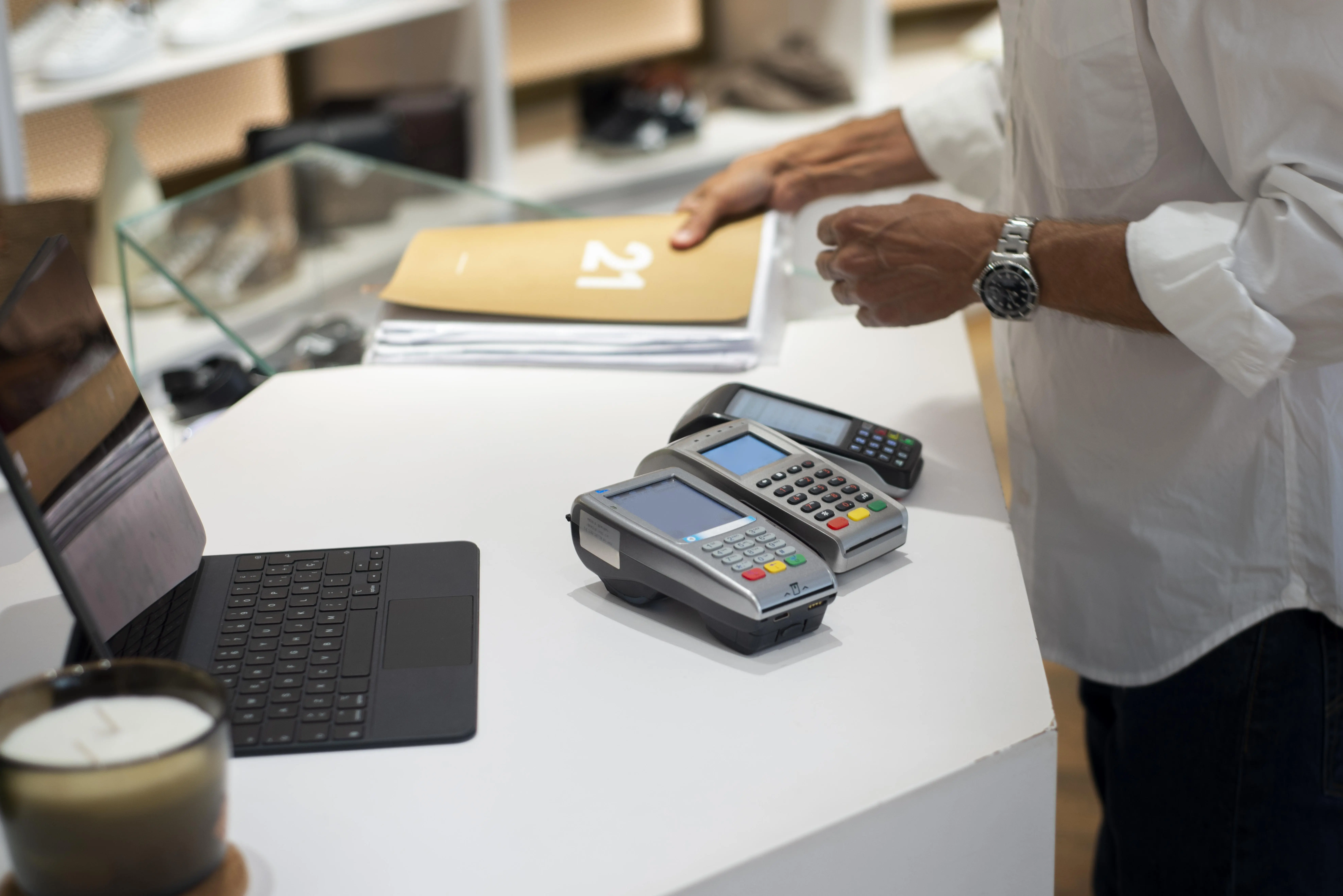
New POS uses and trends: towards omnichannel, intelligent systems

Point-of-sale (POS) systems have evolved considerably in recent years, from simple cash registers to intelligent platforms capable of managing the entire customer journey.
This transformation is driven by the rise of omnichannel commerce, the digitalization of stores and the growing adoption of mobile technologies. To remain competitive, businesses need to keep pace with these trends and adopt POS solutions that combine speed, flexibility and connectivity. Innovations such as self-checkout, click & collect, contactless payments and the endless aisle concept are transforming the customer experience, offering greater fluidity, personalization and choice.
More than a simple transaction tool, the POS is becoming a strategic lever for improving customer satisfaction, optimizing inventory management and enriching interactions between physical and digital commerce. Understanding these evolutions is essential to prepare the future of retail.
Trend no. 1: Self-checkout and automatic checkouts
Self-checkout systems are developing rapidly in the retail and mass distribution sectors, enabling customers to scan and pay for items without having to go through a cashier.
This autonomous payment method meets the growing demand for speed and fluidity in stores. Key benefits include reduced queuing, better staff allocation to higher value-added tasks, and a faster shopping experience for consumers in a hurry.
However, these systems require customer support to avoid scanning errors and payment problems, especially for users less familiar with the technology. They also require investment in hardware and software maintenance.
Successful adoption relies on a balance between automation and human assistance, ensuring that the gain in speed does not come at the expense of customer satisfaction.
Trend n°2: Click & collect / Order Online Pickup in Store (O2O)
The Click & Collect model, or O2O (Order Online, Pickup in Store), enables customers to order online and pick up their purchases directly in store.
This approach combines the convenience of e-commerce with the immediacy of physical commerce. For retailers, it represents a means of increasing in-store traffic, building customer loyalty and streamlining order logistics. Benefits also include shorter delivery times and improved stock management, thanks to greater visibility of inventory.
Optimizing the customer journey can involve dedicated pick-up zones, real-time notifications of order availability and rapid validation processes.
By enabling customers to collect their purchases without waiting, Click & Collect enhances the user experience and encourages additional purchases during the store visit.
Trend No. 3: Endless aisle, selling beyond in-store stock
The Endless Aisle concept makes it possible to offer in-store items that are not physically available, but are stocked in another warehouse or on an online site.
This approach offers retailers an expanded catalog without increasing sales floor space, and enables them to satisfy specific or rare requests. The customer experience is enriched, as consumers can access products they would not otherwise have found, while retaining the convenience of in-store shopping.
To implement this concept, seamless integration with ERP and PIM is essential, to guarantee real product availability and precise information on stock levels and delivery times.
Trend No. 4: Contactless payment, QR codes and BNPL (Buy Now, Pay Later)
Contactless and QR code payments are becoming increasingly widespread, offering customers speed and security.
Transactions become more fluid, reducing queues and friction at the checkout. At the same time, the Buy Now, Pay Later (BNPL) model is attracting new customer segments by offering attractive financial flexibility.
These solutions have a positive impact on conversion, as they facilitate the act of purchase, and strengthen customer loyalty thanks to a modern payment experience adapted to today's expectations.
The combination of these options enables retailers to respond to omnichannel purchasing behavior and the needs of a mobile and connected customer base.
Trend 5: Unified omnichannel POS
The unified omnichannel POS makes it possible to centralize operations and offer a consistent experience across all touchpoints. For example, a customer can return a product purchased online directly in-store, or use loyalty points accumulated across multiple channels.
Stocks and promotions are managed centrally, avoiding shortages and inconsistencies. This type of solution also improves visibility of customer behavior, enabling personalized offers and stronger relationships. Adopting a unified POS facilitates coordination between e-commerce, physical stores and marketplaces, while simplifying logistics and accounting management.
Retailers benefit from improved operational efficiency and a harmonized customer experience, essential in a competitive environment.
What does the future hold for POS systems?
The future of POS systems tends towards unified omnichannel solutions, integrating artificial intelligence to offer real-time recommendations and anticipate customer needs.
These systems are increasingly coupled with CDP, DXP and PIM, creating a holistic customer experience where every interaction is consistent and personalized. API-first architectures and SaaS solutions offer the flexibility and scalability needed to keep pace with retailers' growth and rapidly changing consumer expectations. This technological convergence not only helps to optimize sales and loyalty, but also to better manage inventory, promotions and customer relations across all channels.
The POS of the future will thus become genuine strategic platforms, at the heart of the customer experience and store operational management.
Point-of-sale (POS) systems have become intelligent, connected and omnichannel platforms. Much more than simple checkouts, they now orchestrate the entire customer journey: self-checkout, Click & Collect, endless aisle, contactless or multi-installment payments (BNPL). These innovations meet expectations for speed, fluidity and personalization, while reinforcing the coherence between physical and digital commerce.
The unified POS centralizes inventory, promotions and loyalty across all channels, improving visibility and customer relations. Coupled with solutions such as CDP, DXP or PIM, it becomes a strategic lever for optimizing sales, satisfaction and loyalty. The future of the POS looks set to be resolutely intelligent, modular and data-driven, at the heart of the omnichannel customer experience.







_Leader_Mid-Market_Leader.svg)



_HighPerformer_Enterprise_HighPerformer.svg)
_HighestUserAdoption_Enterprise_Adoption.svg)







